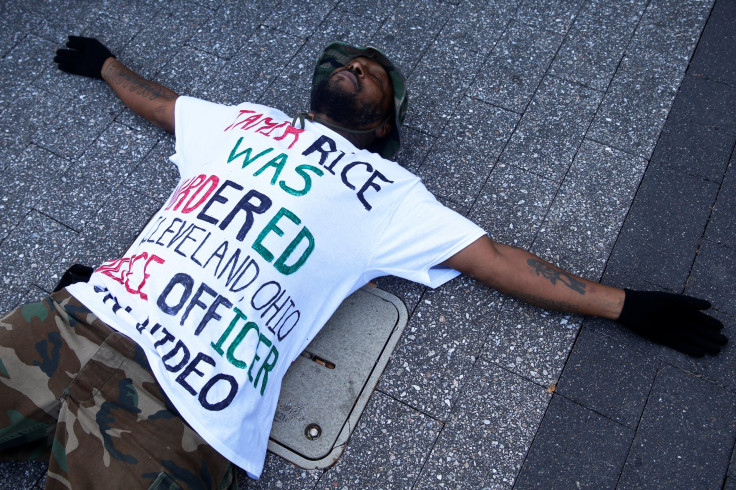Police Shootings By Race: Among People Shot By Officers, Blacks Twice As Likely To Be Unarmed As Whites, New Research Says

Among victims of fatal police shootings, blacks are more than twice as likely to have been unarmed as whites, a new study says.
Researchers led by a group from the University of Louisville analyzed data on 990 deadly police shootings from 2015 to understand the role race and bias play in fatal police encounters. By examining the race of unarmed victims, the researchers hoped to see if police were more likely to perceive members of different racial groups as more threatening than others. They found that in 2015 there were half as many black victims of fatal police shootings as white victims, but of those victims, there were more unarmed black victims than unarmed white victims.
"Black suspects were more than twice as likely as white suspects to have been unarmed," Justin Nix , an assistant professor of criminal justice at the University of Louisville and one of the leaders of the study, told the International Business Times. "And that's after we controlled for things like mental illness, threat level, age, etc."
A shooting of an unarmed person could be considered a threat perception failure on the part of the police, Nix said. Police shoot unarmed people when they fail to accurately assess a threat, which could be due to implicit racial bias, or bias that arises from subtle unconscious assumptions, as opposed to overt racism.
"If you can accept that assumption, than we showed that the citizen's race is predictive of those threat perception failures, which we think is evidence of bias, and presumably implicit bias, although it's impossible to tell," Nix told IBT.
While studies in the past indicated that police were more likely to shoot black people in computer simulations, a recent study using highly realistic video simulations came to the opposite conclusion, officers were more hesitant to use deadly force on black suspects. Since simulations, no matter how accurate, are not life and death and can't reflect the actual pressures of a potentially deadly encounter, Nix's team wanted to look at actual instances where police made the decision to use deadly force to try and untangle the contradictory results from past studies.
It's only very recently that data has existed that makes that possible. Nix's study, which was published Wednesday in "Criminology & Public Policy," is one of the first to use data from the Washington Post's Pulitzer-prize winning Fatal Force police shooting database, which began collecting information on police shootings in 2015. The Post's database is one of a few such databases created after nationwide protests against police shootings of unarmed black men and the birth of the Black Lives Matter movement drew attention to lack of data on the subject.
2016 will end with slightly fewer fatal police-involved shootings than 2015, by @washingtonpost count https://t.co/WhsnRqj7lm pic.twitter.com/4P3OI6avG2
— John Gramlich (@johngramlich) December 31, 2016
Prior to those efforts, criminologists studying fatal police encounters had to rely on local police departments voluntarily reporting data to the FBI. That data was notoriously incomplete. In 2015, FBI Director James Comey called the lack of data "ridiculous."
"Until very recently, we’ve been working with a puzzle without all of the pieces, because we don't have any reliable national level data," Nix told IBT. Although these new databases aren't perfect, they represent a major step forward in the study of police violence.
What the new data doesn't show, however, are all police shootings. Only fatal shootings are tallied, which means that most of the instances in which police choose to fire their weapons at civilians are not examined in the analysis.
Nix acknowledged that one of the limitations of the study is the size of the sample. According to the Post's count, police killed 991 people in 2015 -- and 963 in 2016. But the dataset became even smaller when limited to unarmed victims. The vast majority victims of fatal police encounters in 2015 were armed with a deadly weapon. Just 93 of the victims were unarmed.
Nix also emphasized that bias wasn't the only possible explanation for the racial discrepancy in the study's results. The researchers weren't able to control for information officers had going into the encounter. Dispatchers could have told officers to expect suspects to be armed, for example. It's possible that police officers were more likely to have been primed to believe black suspects were armed than white suspects.
But there is a theoretical underpinning and years of research that makes the implicit bias explanation more likely.
"All humans exhibit implicit bias," Nix told IBT. "This isn't unique to the police,"
© Copyright IBTimes 2024. All rights reserved.






















